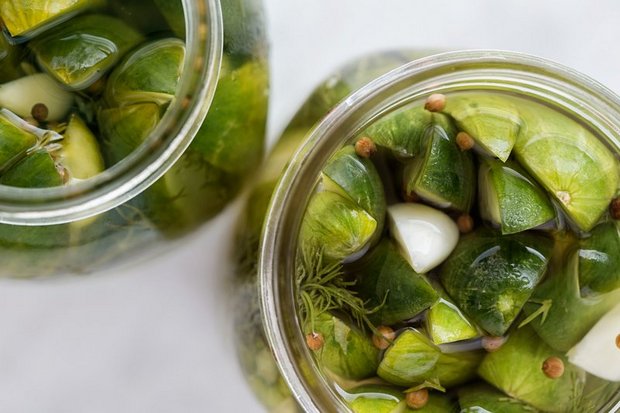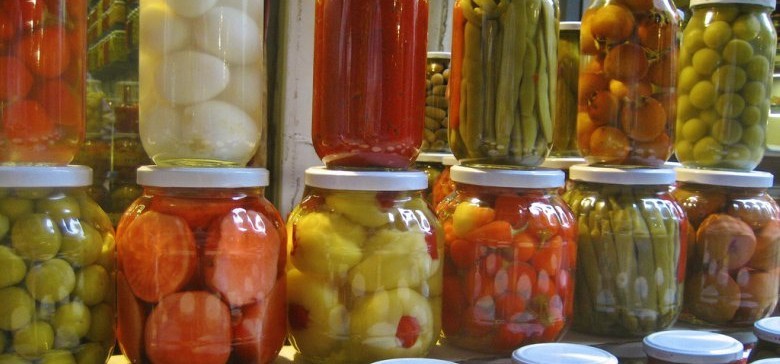With real pickles, you would use a very strong brine and special canning process that extends the shelf-life. With a “quick-pickle”, you are doing something very similar to a marinade. So, it’s faster, but still loaded with flavor.
According to the smart people at epicurious:
To get ready for the oncoming bumper crop of pickle-ready produce, we developed a base quick pickling brine, one that’s based on a ratio to make it super easy to commit it to memory and use whenever the pickling fancy strikes. From there, the sky’s the limit—change up the vinegar and/or sugar type, use more or less spices, add in fresh herbs, make the pickles sweeter (or less so).
This liquid makes use of a ratio that’s easy to remember: just add equal parts water and vinegar, and a quarter the salt to sugar.
We’ve added black peppercorns and mustard seeds for a classic flavor but you can swap in other preferred spices.
For example, if you used 2 cups of apple cider vinegar and 2 cups of water, you would add 1/2 cup of sugar and 2 tablespoons of kosher salt.
After you mix the formula, you can add whatever spices you like, bring it to a boil, cover the produce that you are pickling and give it a few hours to marinate. You can start this around lunch and have it ready for dinner guests!
There are so many foods that are perfect for pickling such as asparagus, mushrooms, cauliflower, beets, cabbage and tomatoes. Even strawberries, grapes and watermelon can be pickled! The list is quite endless and most definitely does NOT stop at cucumbers.

epicurious-pickling basic cucumbers
For more clarification on this recipe, see the basic-brine at epicurious.
Have you ever pickled anything? What will you “quick-pickle” first?
Thanks to epicurious for this great tip. You can see their site for some great ideas to riff off the basic formula.











OK.
@[100001269588891:2048:Jamie Creason Reed]